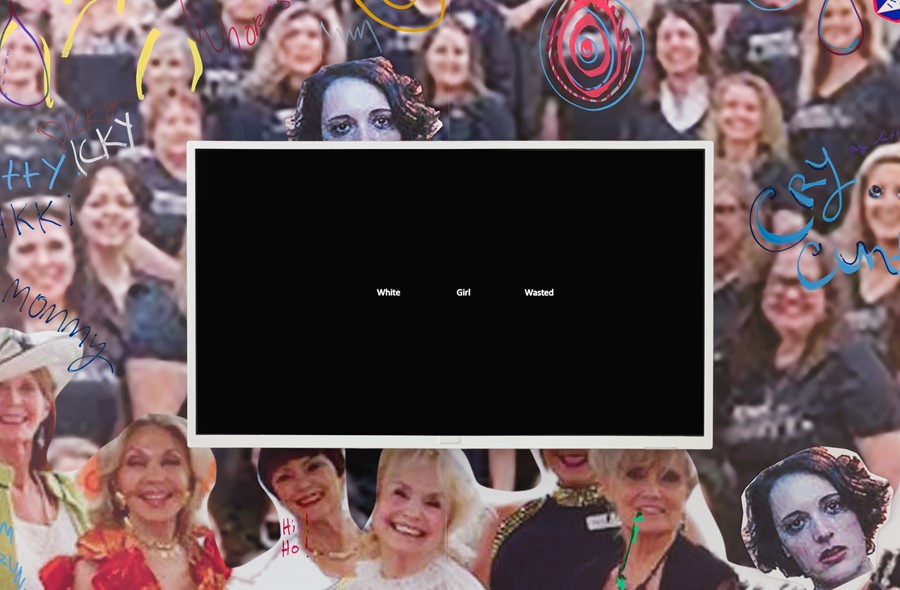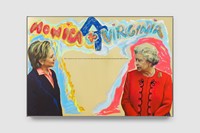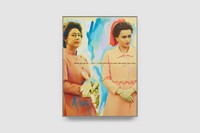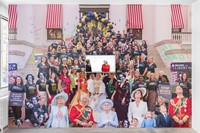As her new exhibition opens at Rose Easton in London, artist Cara Benedetto talks about white privilege, the royal family, and Fleabag
“I fully expect people to get really uncomfortable,” says Cara Benedetto, discussing her upcoming show WGW at Rose Easton in London. Short for “White Girl Wasted”, the exhibition explores how character tropes are created and perpetuated through language and media. Honing in on the idea of white female characters whose messiness is rendered safe by their racial privilege (as embodied by Phoebe Waller Bridge’s famous Fleabag), the American artist is exploring the deep connection between US celebrities and the British royal family.
“It speaks to most of my interests, which are around this construction of victimhood,” says Benedetto. “The white girl wasted [trope] in media and television is femme, white, and inebriated. There’s this conflation of a liberatory practice with vulnerability because of her inebriation. She’s out of it; even maybe dissociated. There are different ways one might leave their body because of forms of abuse or otherwise, but in this case, it’s self-imposed. This is very much about whiteness and the privilege built into it.”
Mirroring much of her current work, the show draws out the complex and highly aspirational connection that viewers have with characters such as Fleabag. These constructed figures don’t just reflect the world as it is. They actively set out narratives of how one might exist within it, which don’t often align with the real-life person playing the role.
“Fleabag is wasted, she doesn’t give a fuck, she fucks who she wants, she’s nasty,” says Benedetto. “But she is actually very fuckable and safe and rich in real life. She is a very safe space in which to enact or hold this character. It’s interesting to aspire towards a negative. There was this moment when I started using the term ‘regressive viewer’, thinking about how one identifies with destructive parts of a character.”
Benedetto’s new exhibition features a series of aluminium prints with a gold sheen, featuring images of American celebrities pretending to be UK royals or socialising with them. Benedetto is interested in the idea of twoness or doubling, which can be observed throughout the show in the construction of characters but is also a feature of printing itself. Many of the images have come from press sources such as Newsweek, highlighting the means of distribution for many of these personas, with text overlaid from Urban Dictionary.
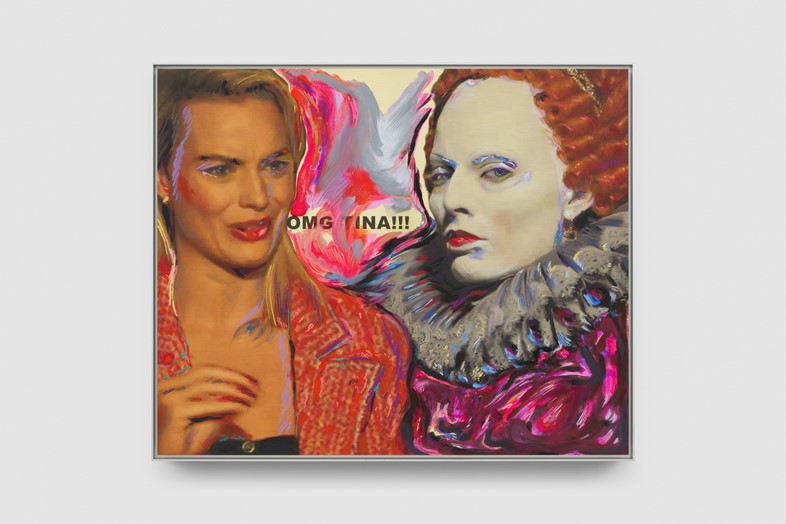
“I was thinking about how white supremacy is reproduced and replicated,” she says. “I am using puffy paint and fan girl materials to mess with the prints. Thinking about the copy and what reinforces a copy; how there is a kind of collaboration happening. I guess I was thinking about how influential even The Crown is. Americans in the media are hooked on identifying with the royal family. The US and UK are these two superpowers. I think they’re both hand in hand in a death cry.”
Language plays a vital role in Benedetto’s work. Many of her artworks bring visual images and the written word together, and she has also published two romance novels. She lives in Richmond, Virginia, the headquarters of the United Daughters of the Confederacy, who feature in her upcoming horror erotica novel Mask of the Red Death at UDC. In the book, the group become possessed by their confederate ancestors and go on a murderous rampage. She has also included a work in WGW which explores the UDC’s new chapter, Mums for Liberty, a group of white women who are known for their heavy imposition on school boards, swaying reading lists and policy towards a Conservative agenda. She noticed a similarity in the aesthetics of both groups with the British royal family, draped in sashes and traditional garments at garden parties. The final work in the show is an image of Mums for Liberty superimposed with one of the British royals. It speaks “to the conflation, mimicry and copy” happening within the group.
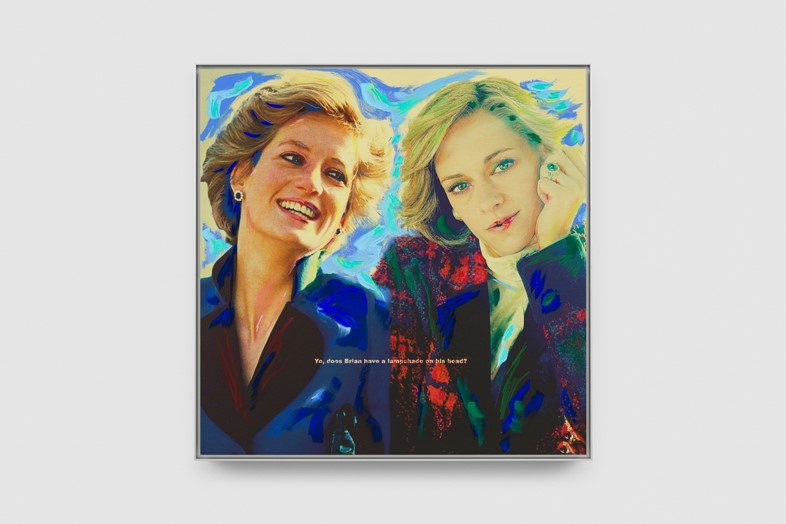
Benedetto is also interested in the erotic in an expanded sense – an ongoing subject within Easton’s programming. The artist’s work delves into the cultural exploitation of people’s “wants” (“I think desire is a complicated term that I don’t like using”) and visualises the ways in which white supremacy is filtered through aspirational characters. “I’m always using erotica, I’m always writing erotica,” she says. “It’s about examining what is turning one on and what it is used for. When I came to thinking about erotica as one of my modes of work, I really felt like I could use words as objects to create a kind of rhythmic poetry that would create a thoughtful turn-on. Or something between a thought and a turn-on.”
Alongside the permanent artworks in the exhibition, the artist also staged a performance on opening night that “resembles an afterparty” but soon dissolved into something very uncomfortable. “It’s thinking about the unhinged Karen; the unravelling Karen,” she says. “Now, anyone is a Karen, but it used to be very specific, about white women using their privilege to call the cops on Black men. It’s this fear of discomfort, or an inability to be with discomfort. Hopefully, this will be able to get to some of the discomfort. I think that’s what performance is good for.”
WGW by Cara Benedetto is on show at Rose Easton in London until 15 June 2024.
